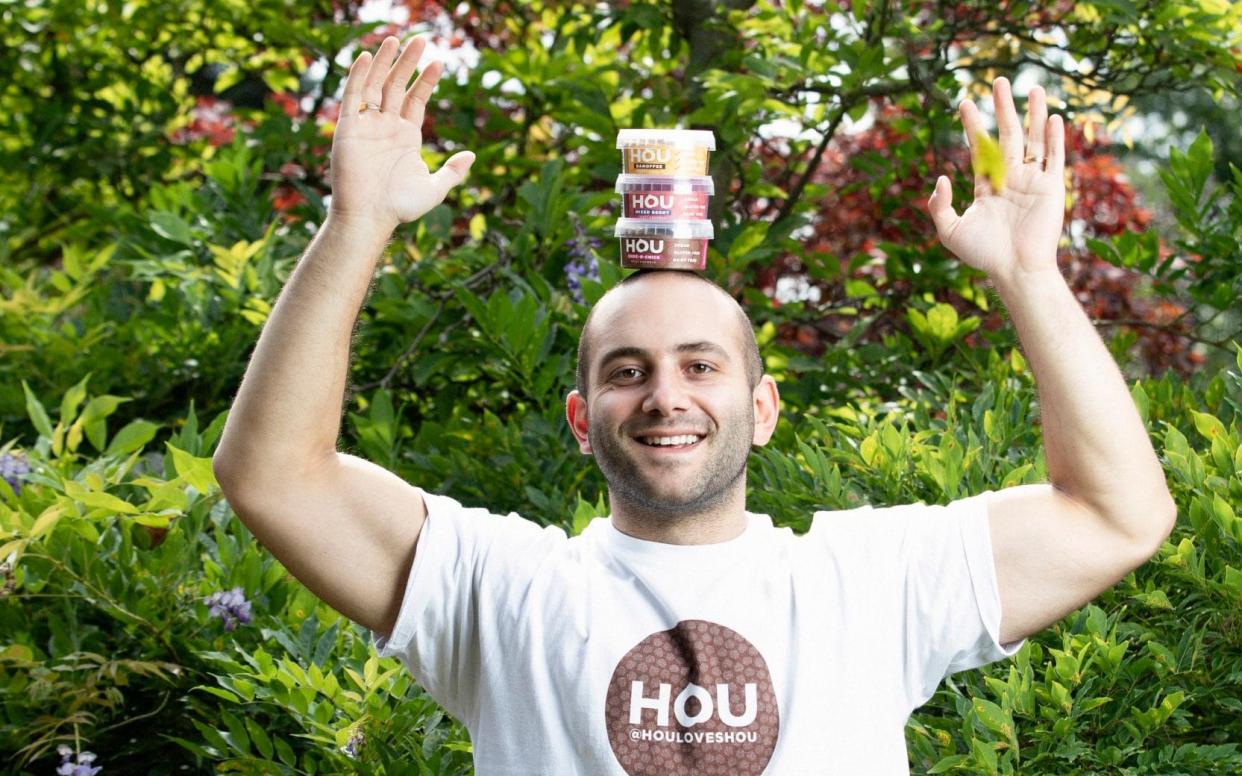'Gout isn’t just the disease of Medieval kings – I was diagnosed in my 20s and it changed my life'

Like most people of his age, Harry Tyndall, 31, did not know much about gout before he was diagnosed with it.
Yes, his father had suffered from the disease for much of his childhood – but Tyndall, a successful food entrepreneur and the inventor of chocolate hummus, struggled to imagine that anyone below the age of 60 could be affected by the condition, which can make your limbs swell up in size. So he was surprised when, as an otherwise-healthy 28-year-old, he received a double diagnosis: not just gout, but kidney stones as well.
“When my doctor told me, I nearly had a heart attack,” says Tyndall, from Willesden Green in north-west London. “Gout is known to be a rich man’s diet, and for 60-year-olds. Unfortunately for me, I’m not 60, and I’m not that rich yet.” The big toes in both of his feet swelled up enormously, which made walking very painful and something of a “major hobbling process”. He remembers being on his “hands in knees in hospital” with pain.
Long painted as the disease of gluttonous Medieval Kings, gout is now on the rise once again, largely as a consequence of obesity and fatty foods. The number of people diagnosed with gout rose by 64 per cent between 1997 and 2012, according to researchers, jumping by 4 per cent each year.
It’s commonly thought to be caused by eating too much red meat or drinking too much red wine, but the rise in gout might also be linked to our growing consumption of fizzy drinks, according to Professor Alan Silman, the medical director of Arthritis Research UK.
Gout, Prof Silman says, is caused by having too much uric acid, which goes on to crystallise in your joints. It usually affects the joint at the bottom of the big toe, and the pain can be “unbelievable”. He says that an attack of gout is “probably the most painful form of severe arthritis there is”. Many of his patients say the affected joint becomes so tender that they can’t even sleep under a bedsheet.
It’s caused by a combination of genetics and diet, he says. Most people could eat steaks “till they’re coming out of our ears” and still never suffer from gout, he says, because it requires some degree of genetic predisposition.
He points to a famous study on the Polynesian islands, where gout was rare despite the local population having a “tremendous genetic tendency” toward the condition. When they began moving to New Zealand, however, they became exposed to high levels of meat and alcohol, and the number of gout cases exploded.
He thinks that gout is not taken seriously enough, especially by the young, saying in the past: “[Gout] is not a trivial condition, yet its reputation as a ‘joke’ disease that only affects florid-faced country squires has meant that over the years it’s not always taken as seriously as it should be.”

This all means that those who are genetically inclined towards the disease will have to watch their diet very carefully, probably for their whole lives, to avoid immensely painful attacks.
And this, says Harry Tyndall, is what he's found most difficult since his diagnosis. “I’ve got a terrible sweet tooth, so after every meal I always used to have a bar of chocolate or an ice cream, or two ice creams, or back in the day a whole tub of ice cream.”
Tyndall would regularly drink a whole tub of Ben & Jerry’s ice cream after melting it in the microwave, which he admits was “probably not the smartest thing to do”. He remembers once eating 70 McDonalds chicken nuggets in one sitting. Another time, he ate three burgers at Gourmet Burger Kitchen in one go.
“This kind of explains why I’ve got gout. I do regret it a bit, but trust me, I had a lot of fun eating.”
Now, he’s been forced to cut it all out. He hasn’t touched red meat or red wine for two and a half years.
“This year in particular has been quite frustrating, I’ve had gout come up three or four times, and I don’t really know what from. So for the last four or five weeks I’ve actually cut out most dairy [including] ice cream, yoghurt, milk chocolate, and cheese. Which I promise you is so frustrating.”
It was this diet transformation that led Tyndall to his next food-related idea: chocolate hummus. “I was looking for something sweet, non-rich, non-dairy. And at the same time I was buying hummus, and it literally came into my head, I wonder if there’s any sweet hummus, and I realised there wasn’t.”
Teaming up with his business partner Jake Finn, who he first met as a teenager during a tour of Israel, Tyndall quit his job as the Head of Sales at Deliveroo to create ‘HOU'. They developed a range of sweet hummus pots, and have recently moved into supermarket Budgens.
He admits that some customers are surprised to hear that he has added chocolate to the chickpea-based Middle Eastern spread.

“When you start talking about it, sometimes [customers] do get a little bit nervy, but also excited. But luckily when they do actually taste it, we do convert a lot of nervous triers into HOU lovers.”
Tyndall now wants to warn more young men about the dangers of gout. “I think young people just don’t really understand or appreciate what we’re putting into our bodies.”

 Yahoo News
Yahoo News 
